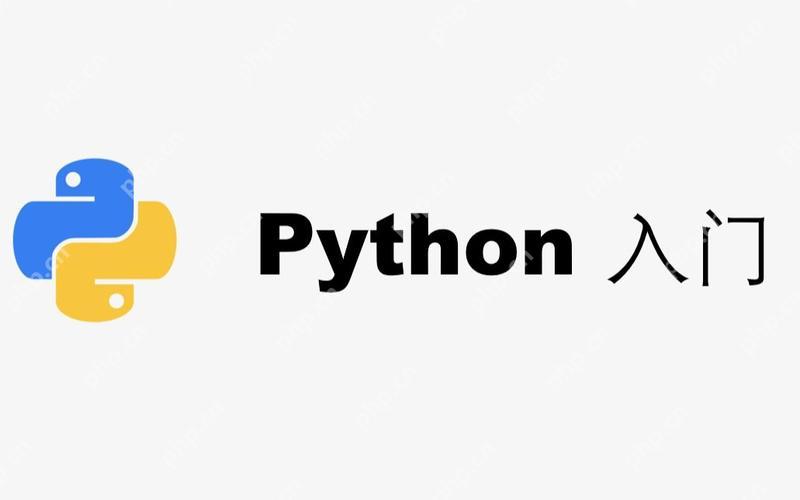在python中,判斷字符串是否以特定字符開(kāi)頭使用str.startswith()方法。1) 可以檢查單個(gè)或多個(gè)前綴;2) 支持指定索引范圍;3) 結(jié)合endswith()用于文件名驗(yàn)證;4) 使用lower()或upper()方法可進(jìn)行大小寫(xiě)不敏感檢查。

在python中判斷字符串是否以特定字符開(kāi)頭,可以使用str.startswith()方法。讓我們深入探討一下這個(gè)方法的用法和一些實(shí)際應(yīng)用場(chǎng)景。
在Python中,我們經(jīng)常需要處理字符串,而判斷字符串是否以特定字符或子串開(kāi)頭是常見(jiàn)的需求。startswith()方法就是為此而設(shè)計(jì)的,它不僅簡(jiǎn)單易用,而且非常高效。
讓我們來(lái)看一個(gè)簡(jiǎn)單的例子:
立即學(xué)習(xí)“Python免費(fèi)學(xué)習(xí)筆記(深入)”;
text = "Hello, World!" if text.startswith("Hello"): print("The String starts with 'Hello'") else: print("The string does not start with 'Hello'")
這個(gè)代碼片段會(huì)輸出”The string starts with ‘Hello'”,因?yàn)樽址_實(shí)是以”Hello”開(kāi)頭的。
現(xiàn)在,讓我們深入探討一下startswith()方法的更多細(xì)節(jié)和應(yīng)用場(chǎng)景。
首先,startswith()方法可以接受一個(gè)或多個(gè)前綴作為參數(shù)。如果是多個(gè)前綴,它會(huì)檢查字符串是否以其中任何一個(gè)開(kāi)頭。例如:
text = "Hello, World!" if text.startswith(("Hello", "Hi")): print("The string starts with 'Hello' or 'Hi'") else: print("The string does not start with 'Hello' or 'Hi'")
這個(gè)例子會(huì)輸出”The string starts with ‘Hello’ or ‘Hi'”,因?yàn)?#8221;Hello”是有效的前綴之一。
此外,startswith()方法還可以指定開(kāi)始和結(jié)束的索引,這樣可以檢查字符串的某個(gè)子串是否以特定字符開(kāi)頭。例如:
text = "Hello, World!" if text.startswith("llo", 2, 5): print("The substring from index 2 to 5 starts with 'llo'") else: print("The substring from index 2 to 5 does not start with 'llo'")
這個(gè)例子會(huì)輸出”The substring from index 2 to 5 starts with ‘llo'”,因?yàn)閺乃饕?到5的子串確實(shí)是以”llo”開(kāi)頭的。
在實(shí)際應(yīng)用中,startswith()方法非常有用,比如在文件處理、數(shù)據(jù)清洗、用戶(hù)輸入驗(yàn)證等場(chǎng)景中。例如,在處理文件名時(shí),你可能需要檢查文件是否以特定的擴(kuò)展名結(jié)尾:
filename = "example.txt" if filename.startswith("example") and filename.endswith(".txt"): print("This is a valid text file") else: print("This is not a valid text file")
這個(gè)例子展示了如何結(jié)合startswith()和endswith()方法來(lái)驗(yàn)證文件名是否符合特定格式。
然而,使用startswith()方法時(shí)也需要注意一些潛在的陷阱。例如,如果你不小心使用了大寫(xiě)或小寫(xiě)字母,而字符串中是另一種形式的字母,那么檢查將會(huì)失敗。為了避免這種情況,你可以先將字符串和前綴都轉(zhuǎn)換為小寫(xiě)或大寫(xiě):
text = "HELLO, World!" if text.lower().startswith("hello"): print("The string starts with 'hello' (case-insensitive)") else: print("The string does not start with 'hello' (case-insensitive)")
這個(gè)例子會(huì)輸出”The string starts with ‘hello’ (case-insensitive’)”,因?yàn)槲覀兪褂昧薼ower()方法來(lái)進(jìn)行大小寫(xiě)不敏感的檢查。
總的來(lái)說(shuō),startswith()方法是Python中一個(gè)非常強(qiáng)大的工具,它可以幫助我們高效地處理字符串的前綴匹配問(wèn)題。在使用時(shí),注意大小寫(xiě)敏感性和索引范圍的使用,可以讓你的代碼更加健壯和靈活。
.jpg)

















.png)
